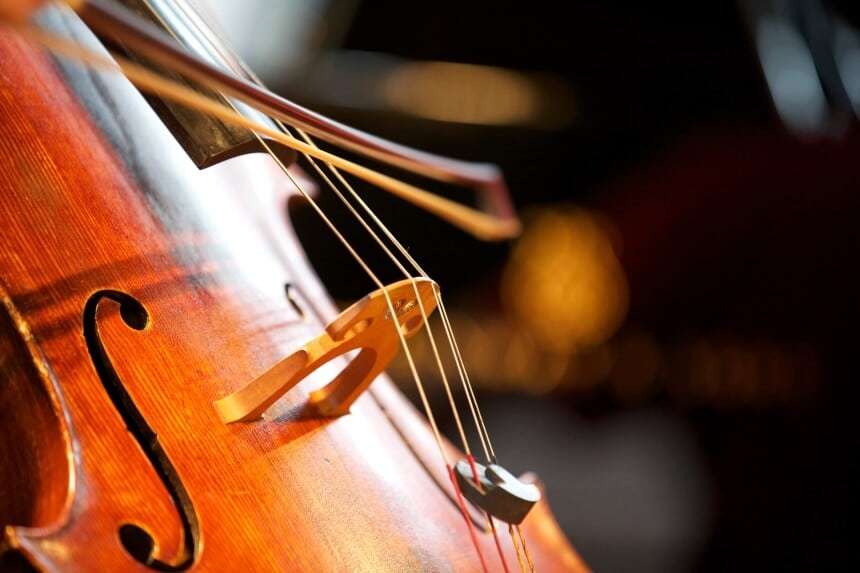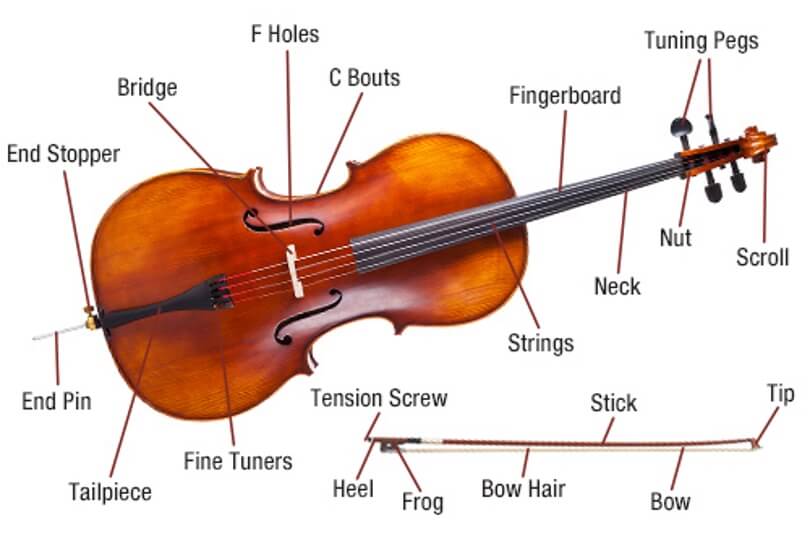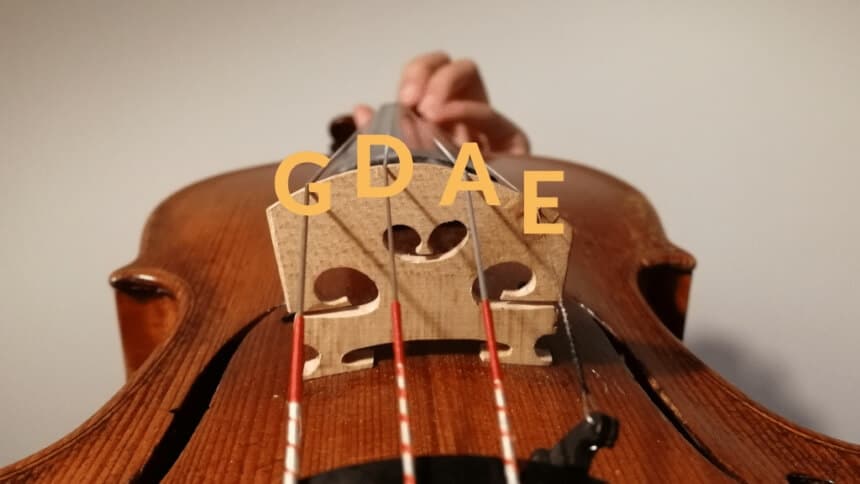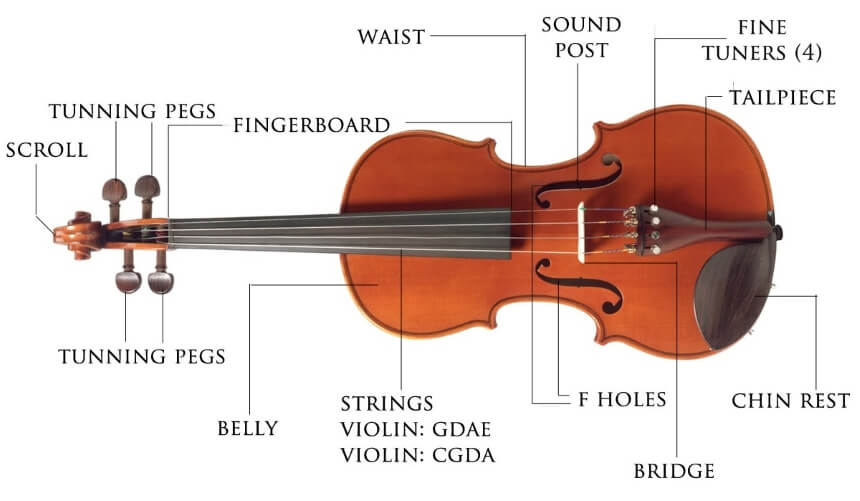The cello and violin are both stringed instruments Trusted Source String instrument - Wikipedia String instruments are musical instruments that produce sound from vibrating strings when a performer plays or sounds the strings in some manner. en.wikipedia.org . At first glance, the only difference between the cello and the violin is the size. The cello is bigger than the violin. But apart from the size, are there any other differences? In this cello vs violin comparison post, we consider some of the biggest differences between the two instruments.
We discover the difference between the two by checking out their features. After considering the features and differences, you should know which of them is better suited for your playing requirements. We start with the basics of both instruments.
 As this is the bigger instrument, we have decided to begin our comparison with it. The cello, according to certain people, is simply an oversized violin. However, apart from the size, the sound and other things set it apart from the violin. It comes with different parts, and you need to know these parts before you decide whether to buy them or not.
As this is the bigger instrument, we have decided to begin our comparison with it. The cello, according to certain people, is simply an oversized violin. However, apart from the size, the sound and other things set it apart from the violin. It comes with different parts, and you need to know these parts before you decide whether to buy them or not.
The cello’s body is bigger than that of the violin. A classical model is made from wood. In most cases, spruce or maple is used in constructing the body of a cello. However, some other types of woods are also used, depending on what the luthier wants. Aside from the traditional cello, there are also electric cellos that feature different designs.
 As a stringed instrument, the strings of the cello are some of its most vital components. This instrument is designed with a quartet of strings, ranging from A to C. A string is the highest and thinnest of the strings, while C is the lowest and biggest of the lot.
As a stringed instrument, the strings of the cello are some of its most vital components. This instrument is designed with a quartet of strings, ranging from A to C. A string is the highest and thinnest of the strings, while C is the lowest and biggest of the lot.
 Aside from the body and strings, other parts make up the best cello. Some of the other vital parts include the bouts and the waist. These two parts are made to enhance sound production and increase bow clearance.
Aside from the body and strings, other parts make up the best cello. Some of the other vital parts include the bouts and the waist. These two parts are made to enhance sound production and increase bow clearance.
There is a pin rod or spike at the bottom of the cello. This piece of wood or metal anchors the instrument to the floor as you play.
While the bouts and waist are some of the more important extra parts of the cello, other parts are also important. Some of these are:
The cello is traditionally made of spruce wood.
The cello is played by plucking the strings. It offers a deep and rich sound, with the music written and read in bass clef. Cecilio is one of the popular names in the instruments industry, and the CECO-1BK is regarded as one of the best cellos from the brand.
 The violin is similar in appearance to the cello. However, it is a smaller instrument. It is also arguably the more popular of the two types of instruments we compare in this post.
The violin is similar in appearance to the cello. However, it is a smaller instrument. It is also arguably the more popular of the two types of instruments we compare in this post.
The violin has a similar shape to the cello. The body is shaped like an hourglass; however, the top and back are arched. It features several bouts. These include a pair of upper bouts, a pair of lower bouts, and a pair of concave bouts that make up the waist.
 Most violins you might encounter have four strings – G, D, A, and E. However, this is not the case for all violins on the market. We have found that there are five-stringed, six-stringed, and seven-stringed violins available as well. The higher the number of strings, the rarer the violin.
Most violins you might encounter have four strings – G, D, A, and E. However, this is not the case for all violins on the market. We have found that there are five-stringed, six-stringed, and seven-stringed violins available as well. The higher the number of strings, the rarer the violin.
For five-stringed models, you will find that these have a C string in addition to the G, D, A, and E strings.
 Violins come with other parts. For instance, this instrument has multiple fittings like the tailpiece and bridge. Depending on the model, some violins consist of a quartet of fine tuners on the tailpiece. The instrument also has the scroll and chin rest.
Violins come with other parts. For instance, this instrument has multiple fittings like the tailpiece and bridge. Depending on the model, some violins consist of a quartet of fine tuners on the tailpiece. The instrument also has the scroll and chin rest.
The body of the violin is made of wood. Traditional models are made from woods like spruce and willow. Violin creators usually use old-growth trees to make violins. These trees yield woods that are stronger and harder than the average wood used for making instruments.
Violins give off a higher sound than the cello. Most people relate more to its sound because it is eerily similar to a human voice. Reviews praise the Cecilio Violin as one of the best instruments for beginners.
 So, which of these two should you choose? Well, the choice depends on what you are looking for and what you prefer.
So, which of these two should you choose? Well, the choice depends on what you are looking for and what you prefer.
In terms of difficulty, both instruments are hard to master. However, many people have remarked that the cello is faster to learn because of the playing and hand position.
On the other hand, the violins’ position under the chin can make hand positions difficult at first. Also, finger positioning is more difficult.
If you want something relatively easier to learn, then the cello is better for you. But if the violin is what you want, check out this post about the best models for beginners.
This is a no-brainer as the violin is several sizes smaller than the cello. If you are thinking about transporting the instruments, then the violin offers more ease. You can carry them on your back and even on public transportation without plenty of fuss.
You can also decide which to learn by doing the following:
This cello vs violin comparison has discussed the features and differences between the cello and violin. We hope that this guide helps you to decide which of these instruments to play.
Several factors influence which of them you will play, but the most important factor is the sound that you are drawn to. Why don’t you listen to music from both instruments and determine which of them you prefer? Happy playing!